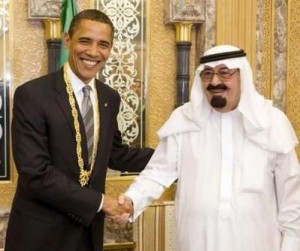 In this petition, I call upon the King of Saudi Arabia, the Custodian of the Holy Mosques King Abdullah bin Abdulaziz, to re-invigorate his naval forces!
In this petition, I call upon the King of Saudi Arabia, the Custodian of the Holy Mosques King Abdullah bin Abdulaziz, to re-invigorate his naval forces!
(Editorial Note: It is tradition that anyone can petition the Saudi King, and, given that King Abdullah has been flooded by Western-inspired petitions supporting social reforms and domestic matters, I figured the Monarch might find a petition on naval matters a refreshing change of pace. That, and I also expect that when the King meets President Obama on his upcoming visit to the Kingdom, certain matters brought up in the petition that follows will be discussed, and–quite likely–a big naval arms deal announced…)
Great King, the 15,ooo-man Royal Saudi Navy has–thanks to the naval-oriented investments from Sawari I and II–been the recipient of your favorable attention, and yet, it is the shabby, resource-starved Iranian Navy (a force more fit for smuggling goods than national representation) that proudly cruises the Indian Ocean, the Mediterranean and beyond.
Why aren’t the Iranians following in the wake of your Royal Navy?
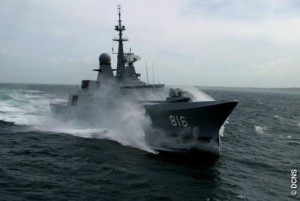 Arabs have a heroic legacy as explorers and traders. Your nation faces the sea on two fronts, and the wealth of your nation depends upon maintaining serenity in both. With three modern Al Riyadh Frigates, four Al Madinah Class Frigates, two auxiliaries and a host of serviceable Corvettes, Patrol Boats and Minesweepers, your Navy should control both the Arab Gulf and the Red Sea–and be off cruising the world–serving as a source of pride and gainful employment for your people.
Arabs have a heroic legacy as explorers and traders. Your nation faces the sea on two fronts, and the wealth of your nation depends upon maintaining serenity in both. With three modern Al Riyadh Frigates, four Al Madinah Class Frigates, two auxiliaries and a host of serviceable Corvettes, Patrol Boats and Minesweepers, your Navy should control both the Arab Gulf and the Red Sea–and be off cruising the world–serving as a source of pride and gainful employment for your people.
Yet the larger units of your Navy, Great King, are barely seen outside of traditional Red Sea territory. Initial exercises with Sudan only took place last year, and this four-ship, 11 day exercise with Pakistan seems to be one of the larger deployments of your Navy to date. While I congratulate you Navy’s recent achievements, your ships have been conspicuously absent from the Gulf of Aden anti-piracy patrols, and your Navy has been unable to help your Arab neighbors when distressed by floods or earthquakes.
This must change!
As you contemplate the multi-billion SNEP II, a massive re-capitalization that many of my former defense industry colleagues are excited about, I urge you to consider prudent investments. Develop a Navy that is sustainable and, ultimately, a source of national pride rather than a grim driver of continued dependency or national embarrassment.
Four Steps Towards Greatness:
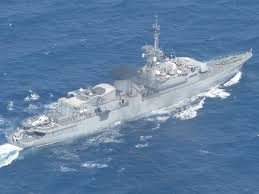 I know that you and your Admirals have been approached by many, many defense contractors, and that they all are urging you to invest in an array of magnificent items. But, before your Admirals go forth and commit to acting like a rich man on his first trip to the bazaar, opening their wallets to those who are only too eager to take your money–please consider this:
I know that you and your Admirals have been approached by many, many defense contractors, and that they all are urging you to invest in an array of magnificent items. But, before your Admirals go forth and commit to acting like a rich man on his first trip to the bazaar, opening their wallets to those who are only too eager to take your money–please consider this:
When stuck pierside, even the most technologically-advanced Navy is useless, while even the simplest of Navies, blessed with fully operational, battle-ready equipment and crews, offers immense value.
That is why I urge you to consider a range of relatively robust (yet reasonable) investments that offer the best solution in workable prestige:
1) Fix–and use–what you have: The newly announced initiative to modernize your Al Madinah fleet and your auxiliary ships is very wise, and, if the refitted ships are actually used post-refit–and not set aside like some sort of museum piece–they will offer your sailors and maintainers a route to proficiency. You have but to reach out and grasp these tools of maritime dominance!
Grow your existing–and substantial–airborne command-and-control and ISR assets to support your existing fleet, while, in exchange for those improvements, force your superior Air Force to focus attention upon Air-Sea Battle tactics, where you might collaborate with the U.S. Navy and Air Force as relative equals in furthering new operational concepts.
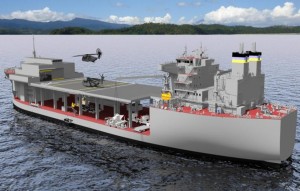 2) Support simple craft that are gateways to advanced tactics and systems: Consider a few NASSCO-built Afloat Forward Staging Bases. These are mere derivatives of a Korean Tanker design, with, essentially, a flight-deck on top. They are, in themselves, simple–it is well within the capabilities of your country to maintain these vessels. The value is in what these ships offer–If you get them now, you’ll–again–be collaborating with the U.S. Navy as relative equals, working together to evolve fundamentally new operational concepts–while being able project power ashore throughout the Arab world.
2) Support simple craft that are gateways to advanced tactics and systems: Consider a few NASSCO-built Afloat Forward Staging Bases. These are mere derivatives of a Korean Tanker design, with, essentially, a flight-deck on top. They are, in themselves, simple–it is well within the capabilities of your country to maintain these vessels. The value is in what these ships offer–If you get them now, you’ll–again–be collaborating with the U.S. Navy as relative equals, working together to evolve fundamentally new operational concepts–while being able project power ashore throughout the Arab world.
An AFSB gives you a great simple platform to operate a far greater number of interesting high-tech baubles…and allow the operation of high-performance small craft as needed. In essence, the ASFB is a robust, low-tech solution for the fielding easily-managed amounts of interesting high-tech equipment (drones and so forth) while growing a cadre of motivated sailors, ship maintainers, and seaborne diplomats.
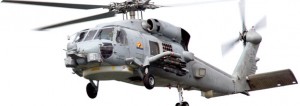 3) Commonality: Your grand Army already operates Blackhawk helicopters, so go ahead and buy large numbers a close relative- the U.S Navy’s MH-60R helicopters (fully stocked with all the weapons and sensor packages!). With good air cover, they’re uniformly lethal (the helicopter always wins against small craft), and great at ASW. In addition, this model is likely to be bought in numbers throughout the globe–you’ll have no problem getting training, spares or help in maintaining these robust littoral combatants.
3) Commonality: Your grand Army already operates Blackhawk helicopters, so go ahead and buy large numbers a close relative- the U.S Navy’s MH-60R helicopters (fully stocked with all the weapons and sensor packages!). With good air cover, they’re uniformly lethal (the helicopter always wins against small craft), and great at ASW. In addition, this model is likely to be bought in numbers throughout the globe–you’ll have no problem getting training, spares or help in maintaining these robust littoral combatants.
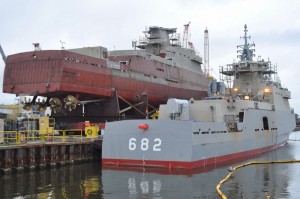 And if you assume that broad coalitions of like-minded countries will become important arbiters of tomorrow’s Middle East, also consider a few tough Ambassador Patrol Boats–the same ones now used by Egypt–and maybe some small combatant built by one of the smaller Gulf Countries. Shared equipment makes for stronger political relationships–and possibly more business should your enterprising Red Sea waterfront propose maintaining the two fleets as one–Ambassadors indeed!
And if you assume that broad coalitions of like-minded countries will become important arbiters of tomorrow’s Middle East, also consider a few tough Ambassador Patrol Boats–the same ones now used by Egypt–and maybe some small combatant built by one of the smaller Gulf Countries. Shared equipment makes for stronger political relationships–and possibly more business should your enterprising Red Sea waterfront propose maintaining the two fleets as one–Ambassadors indeed!
4) Don’t be afraid to buy “used”: No Navy is complete without some high-profile flagships–and in the Gulf, that means Submarines and ships with AEGIS systems. But that does not mean you need to buy new! Far from it. In fact, an expression of interest in buying a used, early-model DDG-51 (or an AEGIS Cruiser we can no longer afford to operate)–as a type of trainer–may prove to be a far easier route forward than just coming out and asking America for a modern, top-of-the-line AEGIS ship.
Take a longer-term view…once AEGIS is in the inventory, subsequent upgrades to accommodate Anti-Ballistic Missile capability become less politically charged and far easier to manage. (And, truly, you Eminence, isn’t your Air Force one of the best in the world? Surely they will, should hostilities commence, sweep the sky of adversaries in the regions where you might be considering using Aegis?)
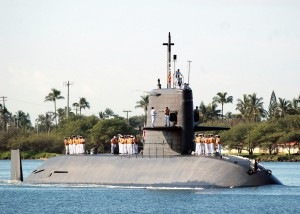 If you must have a submarine, a used “boat” would allow you a low-risk means for your Navy to accumulate needed experience. Offer to buy a used Harushio Class training boat or two from Japan (one of the better sub-builders who, in terms of foreign affairs benefits, offers more relevance than, say, Germany.) If you can’t get Japan (a good customer of yours, yes?) to sell your Kingdom one or two of their high-quality used boats just yet, a cheap used boat from a cash-strapped, less meticulous operator (Greece?) will, again, help your great Navy to build an initial cadre of experienced sailors and maintainers–the very resources you will need to successfully derive maximum value from newer purchases. In a few years, after Japan’s arms bazaar opens and their high-quality new boats are available, you’ll be ready to absorb and operate the new, top-tier platforms. (And, as an aside, the Japanese government may very well appreciate your mere expression of interest, and use your inquiry into a submarine sale as a means to accelerate their gradual normalization of their national security policies.)
If you must have a submarine, a used “boat” would allow you a low-risk means for your Navy to accumulate needed experience. Offer to buy a used Harushio Class training boat or two from Japan (one of the better sub-builders who, in terms of foreign affairs benefits, offers more relevance than, say, Germany.) If you can’t get Japan (a good customer of yours, yes?) to sell your Kingdom one or two of their high-quality used boats just yet, a cheap used boat from a cash-strapped, less meticulous operator (Greece?) will, again, help your great Navy to build an initial cadre of experienced sailors and maintainers–the very resources you will need to successfully derive maximum value from newer purchases. In a few years, after Japan’s arms bazaar opens and their high-quality new boats are available, you’ll be ready to absorb and operate the new, top-tier platforms. (And, as an aside, the Japanese government may very well appreciate your mere expression of interest, and use your inquiry into a submarine sale as a means to accelerate their gradual normalization of their national security policies.)
Conclusion:
Great King, I know you and your Admirals and advisors have studied this matter in great detail. And I know that your advisors and your potential defense industry partners will explain that I am nothing but a poor, under-employed blogger. They are correct; so, please, evaluate this petition with those very facts in mind. I have no hidden agenda and personal interests at heart here (ok, ok…I would be thrilled to do some consulting!)–but, outside of that, I am simply writing as a disinterested observer who has been to your Kingdom, observed your Navy, and fears for the region’s future should your great country continue to squander its fortunes.
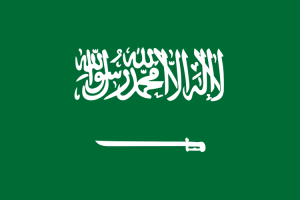 In short, I urge you: Make your Navy earn your favor. Help them use what they have today, and, for tomorrow, invest in relatively simple equipment that can be supported by maintainers and operators already in the Kingdom.
In short, I urge you: Make your Navy earn your favor. Help them use what they have today, and, for tomorrow, invest in relatively simple equipment that can be supported by maintainers and operators already in the Kingdom.
If you must have a high-profile Flagship–or some other advanced capability–buy used where you can, and upgrade when your Navy can operate and maintain that high-profile weapon.
That is the route to a great Navy!
The choice is yours. But, remember, good King, unusable excellence is no match for simple, always-ready assets.
Peace be upon You and Your Kingdom!

{ 2 comments… read them below or add one }
Saudi Arab should become world superpower
God bless Saudi Arab. Fuck india, Israel and iran